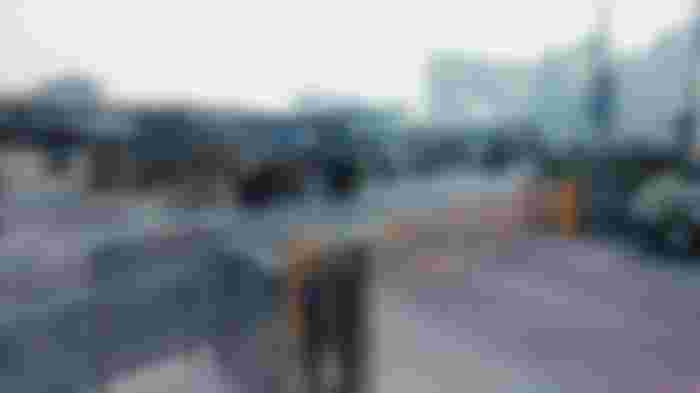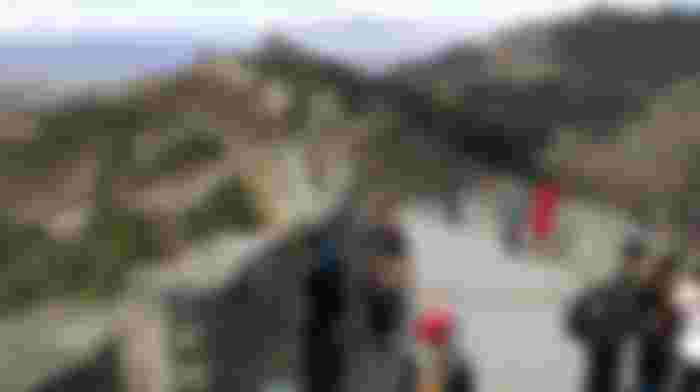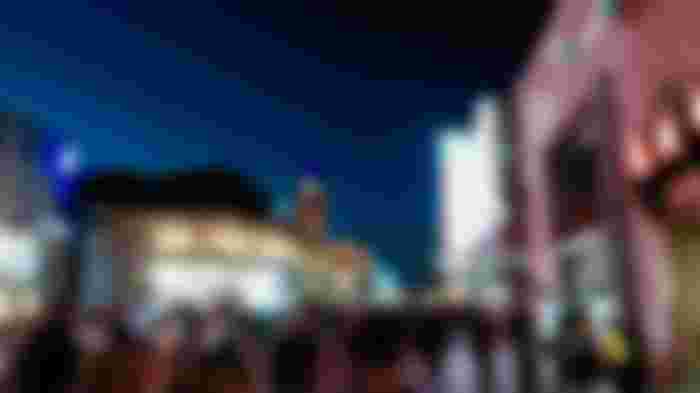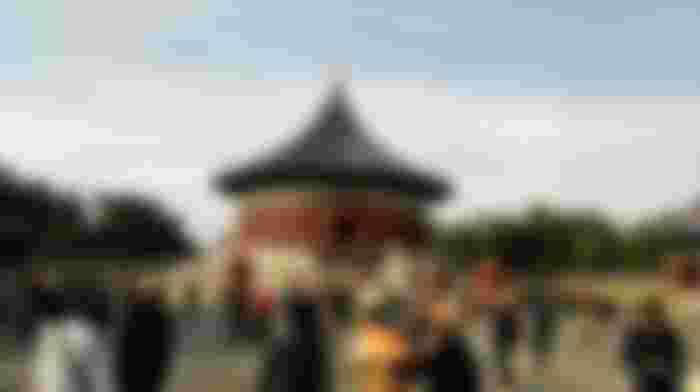My interest in history has always been low. This king, that emperor, the fall of such and such an empire or the inauguration of such and such a kingdom had to be read in the pages of the textbook. However, I met Kublai Khan, a medieval Mongol leader and ruler, during my travels in Beijing.
Kublai Khan was the grandson of Genghis Khan, the founder of the Mongolian Empire. He was the first to establish Beijing in 1272 as the capital of the then Yuan Dynasty of China. The name of Beijing at that time was khanbaliq or Dadu, and now many people in the local language know it as Peking. Today's Beijing is steeped in the history of China, with its stories of ups and downs spanning more than 3,000 years.
At this time of global epidemic, the name 'China' is circulating in people's mouths. I once had the opportunity to visit 686 cities in this country of that city. The story of Guangzhou or Shanghai can be told some other day, today let's talk about the city of Kublai Khan.

The beginning of the journey
First of all, the experience of the first two days in Guangzhou was mixed, with a lot of speed due to language complications.
Tell a short story. The first day we left Guangzhou Airport at about three in the morning. I was telling the taxi-cabs waiting outside in English the address of the hotel we had fixed in advance. But what is he! Everyone just stares blankly or goes away saying 'ching-ming'! I knew that their language was very important in China. But it was not known that it was so obvious. Most locals are completely ignorant of A-A-A-B in languages other than their own. 'The discovery of language and its importance in the history of mankind' - I felt that day! After running the language campaign for about an hour and a half, I met an Indian gentleman. Who knows, he might have had to spend the rest of the night like a refugee at the airport if he hadn't been rescued!
However, in the following days, a Chinese mobile app called 'Baidu Translator' was used for our bilingual work. It is worth mentioning here that in China but Google or our familiar browsers are strictly prohibited. Because the browsers or applications there must also be 'Made-in-China'!
Anyway, let's get back to the main story. Among the many ways to get from Guangzhou to Beijing, the cheapest is the inter-city high-speed electric train. Understanding China's railway system is not a trivial matter for ordinary people like you and me. It is a matter of systematic research. Not exaggerating at all. While Google in the country, I also saw a few research papers in Science-Direct, where only futile attempts have been made to simplify this complex system.
Just listen to a little sample. There are 6,397 passenger trains and 2,848 stations across China. Divide the trains into G, C, D, Z, T, K, P and Y. Each part again has one route, one speed, one different schedule etc. It's like a twisted matter-sapper!
About ten hours after boarding the 8:00 pm train, we arrived in Beijing at 6:00 am. This is my first experience of boarding a high-speed train. Although the D-type train is a second class cabin, one must be amazed at its elegance and improved interior. Even if you run at an average speed of about 250 kilometers per hour, there is no way to understand it while sitting inside. It seems that you have covered 2,294 kilometers in your home, sleeping comfortably.
Being a night journey, there was not much opportunity to see the surroundings well. But what I guessed in the light and dark, or what I saw in the morning, is really remarkable. If you look through the small air-tight windows, you will sometimes see yourself on a high bridge, sometimes inside a tunnel cut through a hill, or sometimes with the tip of the nose of a skyscraper. Never again the untouchable dense jungle, the quiet-silent river or just the silent vast wilderness. Because on this journey from Guangzhou to Beijing you are crossing ‘Hebei’, ‘Henan’ and several other cities in ‘Hubei’ province.
Even if you want to get out of the railway station, you have to go a long way. I crossed many stairs or elevators from the underground station and saw Beijing in the morning. The city of about 18.8 million people was a bit dull then. I took a short walk around and had breakfast. As the station area, you will find food or essentials at hand.

You have to be a little careful when it comes to food in China. I would say, before ordering, take a good look at the food ingredients on the menu. Otherwise, you may accidentally eat the flesh of a snake, earthworm or an unknown animal. And their cuisine is certainly not as spicy as ours. So those who are only accustomed to Asian style food will have to suffer a little.
We didn't have any tour plans in advance. A local suggested the airport was not too far away. Once there, various tour-packages can be easily taken along with accommodation arrangements for the tourists. On the way to the airport, you will also get a taste of a short city tour.
Work accordingly. Arriving at the airport, everything was fine and we left at around eleven-twelve for the purpose of 'badaling'.
What's in a budding?
Badaling is one of the top ten most popular places to visit the Great Wall of China. Nah, I won't sit down to describe the history of the Great Wall of China, or whether it can be seen from the moon at all.
On the way, it seems as if the pieces of the wall are suddenly disappearing from the middle of a hill, as if playing hide and seek. Arriving at the mouth of the Badaling, I saw the boundary wall rising in two directions, north and south. You can start from either side. The southern part is relatively small. No matter where you start, be sure to buy a ticket first.
The entire man-made wall, about 21,196 kilometers long from the north to the east of all of China, falls just 12 kilometers into Badaling. However, only 4 kilometers of wall and 19 Watchtowers have been kept open for tourists for conservation purposes. At first it was made only of sand and stone, but today the form of the Great Wall that we see is basically a crop that has been broken down several times, starting with the Ming Dynasty.
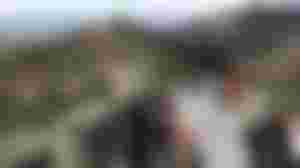
I was just walking and wondering. It was as if a shiver was working. How hard it was to carry these construction materials from far and wide! Chattikhani talk about building such a big wall! I do not know how many people accepted death! There are rumors that those who died would be buried under this wall!
What was really needed for this wall? Was this wall at all able to protect China from enemy attack? In the midst of all these questions, a common proverb was running through my head, Not Rich Great Wall, Not Good Man.
The freezing cold air, the rows of white-pink flowers, the little fort-like parts, the carvings in the stone again, all the writing - all in all, what a thrilling feeling!
In Badaling, you can take a cable-car, pulley, sliding car or slow-roller coaster to get around. I added 'cable-car' to my experience. Many tourists, some sitting, some standing, like a car of medium size. So in my opinion it should be called 'cable-bus'! This vehicle took us around some valley-like parts of the north.
You can also visit several other places, including the Badaling Great-Wall Museum, the National Forest Park, and the Memorial Hall.
Rest after returning from Badaling, wandering the streets of Beijing, including Silk-Street, Time-Square in the evening, and finally returning to the hotel after dinner and falling asleep. Thus ended our first day in the city of Kublai Khan.

The anecdote of the second day
As I said before, history is not understandable to me. So it is quite difficult for me to retrieve the meaning of the medieval architectural patterns seen on the second day.
Started from the famous 'Forbidden City', whose local name is 'Gugong'. During the reign of Kublai Khan's successors, the Ming emperors, the palace was built on an area of about 178 acres for 14 years. Hearing the name, it may seem that the common people are not allowed to enter. Although this rule was applicable during the Ming Dynasty, about 80% of it is now open to tourists.

The entire palace has 90 quarters, 980 buildings and 8,728 rooms. It is a royal matter!
We saw a very small part of it with the scorching sun in the afternoon. There was an object like an audio set bought from the entrance store! The part of the palace that we set foot on, it was instantly telling the history of the place.

Extensive white-stone courtyards, huge lions at the gates, perfect workmanship of palaces or 'The Palace Museum'! If you are a historian or interested in architecture, you must be fascinated. And all the thoughts in my head were just wondering!
Did emperors play football in this huge place? And did they cook in a pot as high as this one floor? Or has any princess ever sat in this garden and cried?
Let him be gay. The outer part of Forbidden City is quite beautiful. Behai Park is a little closer. The calm and cool atmosphere of the lake and the gentle breeze add to the life. I am a nature lover, so I just sat here. The ‘Tiananmen Square’ on the other end didn’t draw me much.
There is a lot of history associated with Tiananmen, this square was once used as the main gate of Forbidden City.

The 'Temple of Heaven' is just four kilometers from Forbidden City. Its rectangular temples indicate 'earth' and the three-storied crescent-shaped temple with marble-bunk in the middle indicates 'heaven'. In winter, prayers were offered in this temple in the hope of a good harvest. It seemed to me that it had a lot in common with the construction style of Forbidden City.

And about thirty minutes down the street, you could see the 'Summer Palace'. But we stopped there. Because you have to go to the railway station in the afternoon, the destination is another trade center of China, 'Shanghai'.
With this, I say goodbye to the city of Kublai Khan, I say goodbye to Beijing! How many dynasties came and went, Beijing still remained as the 'capital'!
Thanks for reading this article for so long.
If you like it Upvote Can give.

